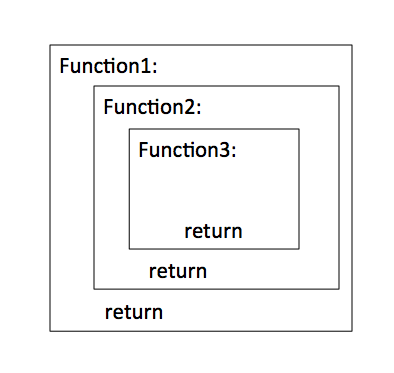Overview:
- return is a keyword in Python
- return statement in Python immediately returns control to the next enclosing function.

List of Contexts the return statement is used in Python:
- To return a value from the happy path of the function.
- To return without a value from the happy path of the function.
- To return from special cases of logic(opposite to the happy path or a labyrinth of several happy cases) from a function.
- In a nutshell, to return from any scope of a function, returning with or without a value.
- If the return is from an enclosing try block with an associated finally block, the code inside the finally block is executed before the return.

Picture showing multiple exit gates - or return paths for the occupants. Photo:Thomas Kamann
- If return is invoked without an expression argument to it, the value None is returned.
- If there is no return statement specified at the end of a function the value returned is None.
Example1:
To return a value from the happy path of the function
|
import math
def CircleCircumference(radius): circumference = 2*math.pi*radius return circumference
radius = 5 print("Circumference of a circle with radius %f is %f"%(radius, CircleCircumference(radius))); |
Output1:
|
Circumference of a circle with radius 5.000000 is 31.415927 |
Example 2:
|
def printHeader(): print("<head>"); print("<title>"); print("Exercise on return statement in Python Programming Language"); print("</title>"); print("</head>");
printHeader();
|
Example 3:
- This example handles multiple Happy paths and a couple of refined cases. “Whether the year value divides by four without any remainder or not” form two happy paths.
- Also there are more rare cases to be handled like events that can happen only once in 100 years or once in 400 years.
- In such cases as well returning a valid value is needed to make the function defect-free.
|
def isLeapYear(year):
if (year % 400 == 0): # Happens only once in 400 years return True;
elif (year % 100 == 0): # Happens only once in 100 years return False;
elif (year % 4 == 0): return True; # Happy Path1
return False; # Happy Path2
yearVal = 2400 leapTest = isLeapYear(yearVal)
outputString = "" if leapTest : outputString = "%d is a leap year"%(yearVal) else: outputString = "%d is not a leap year"%(yearVal)
print(outputString)
|